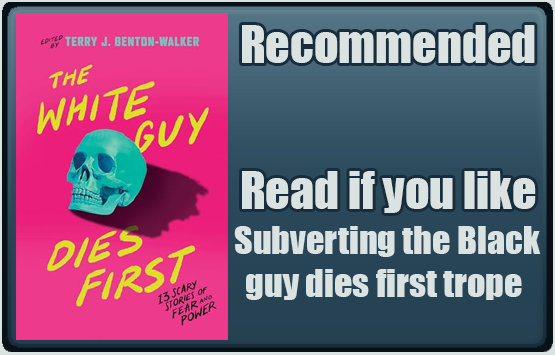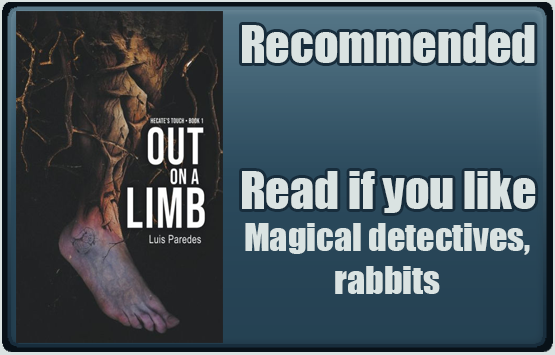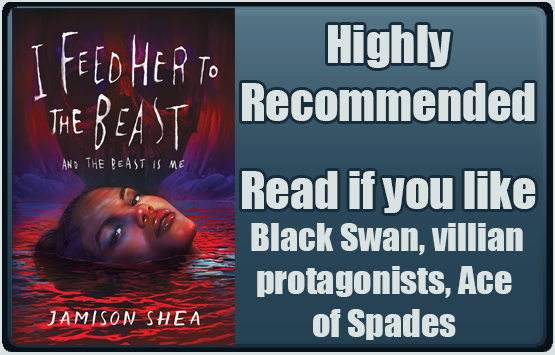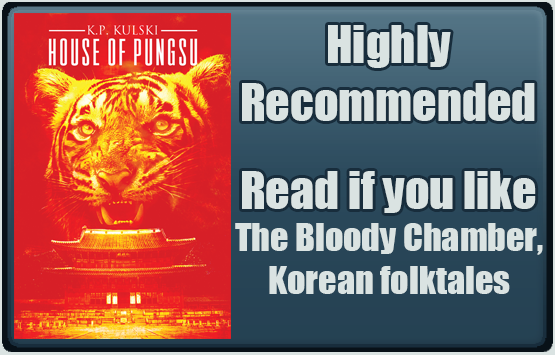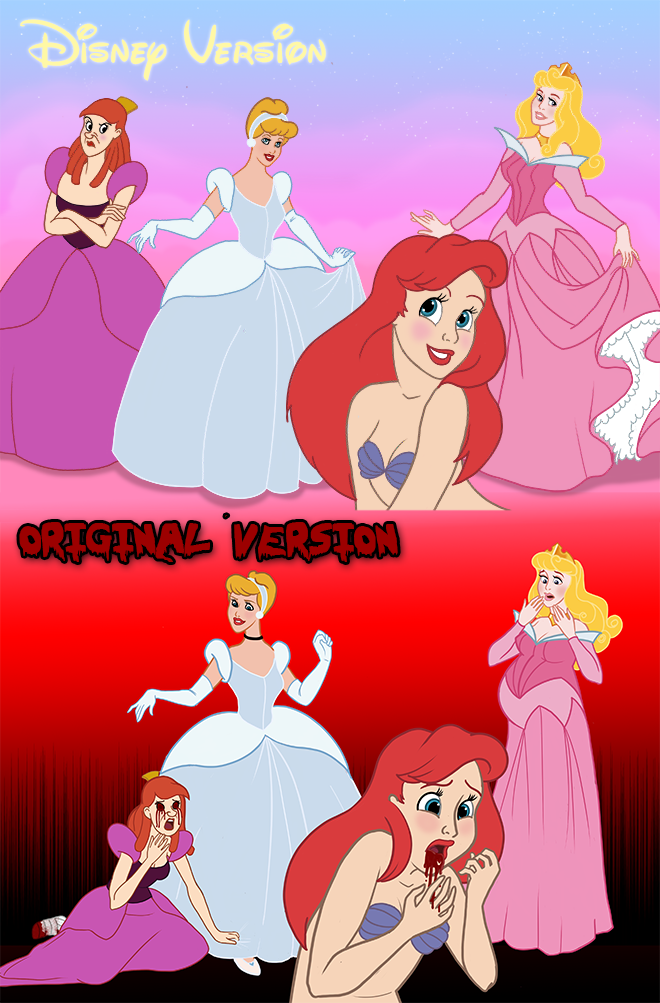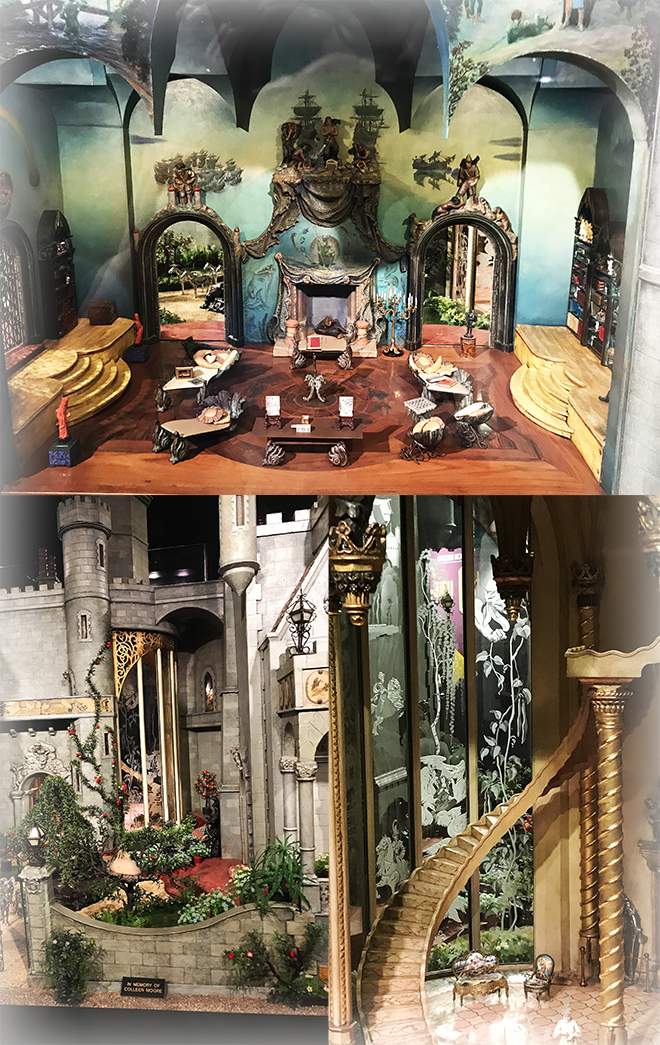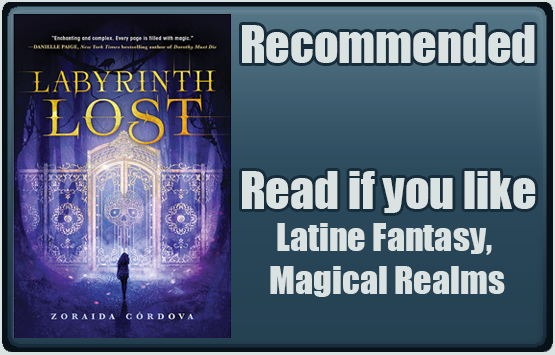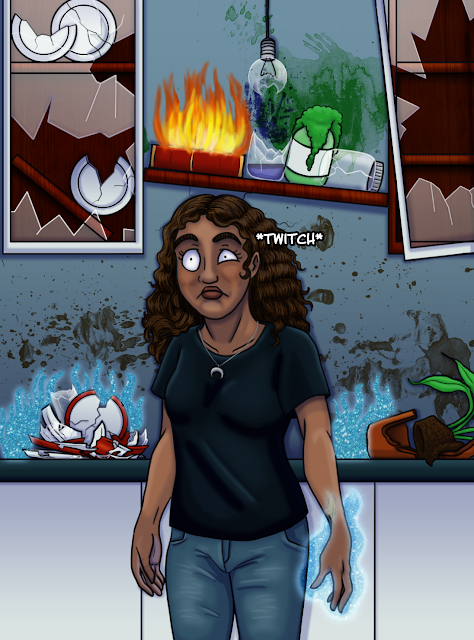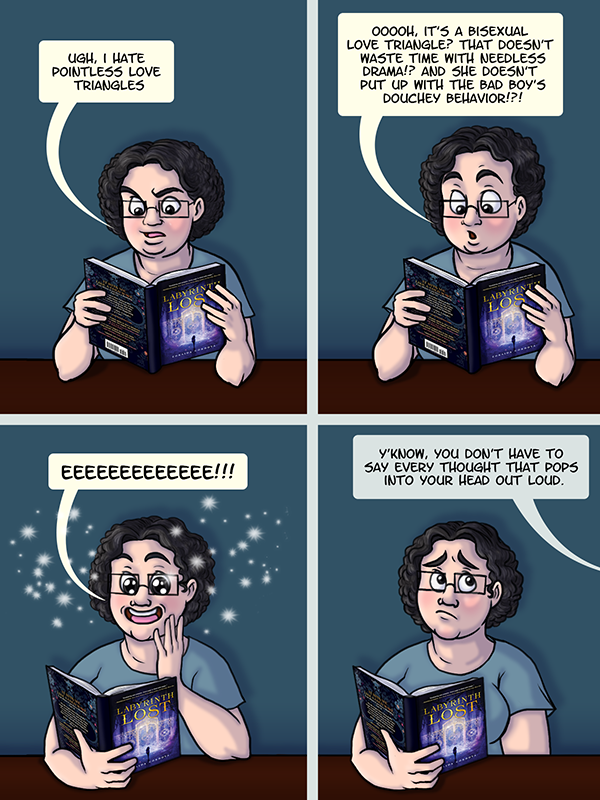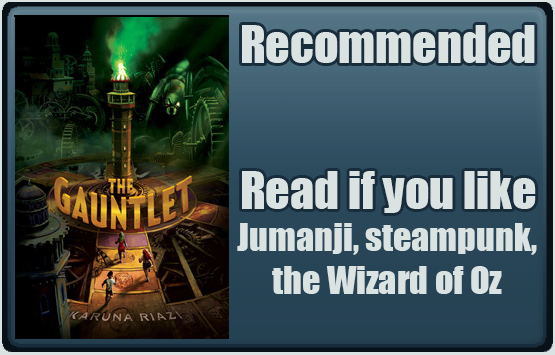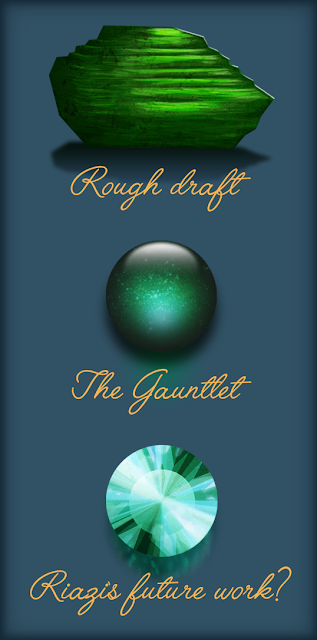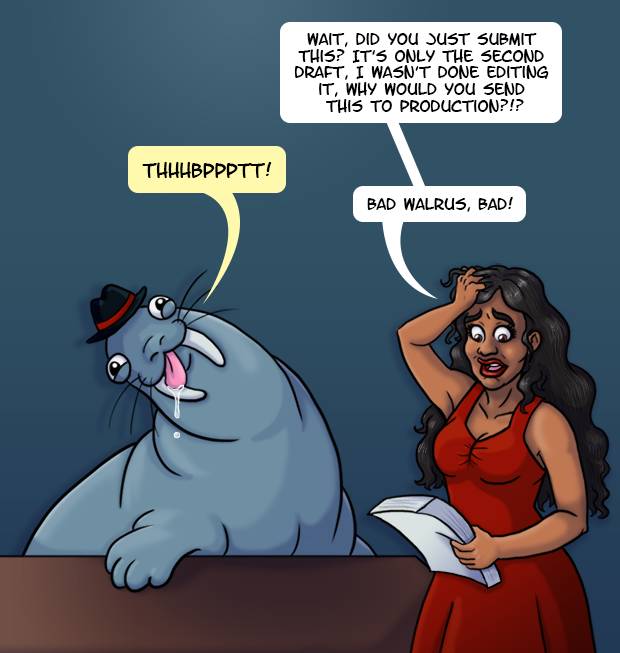Formats: Print, audio, digital
Publisher: Tor Teen
Genre: Apocalypse/Disaster, Dark Fantasy, Eco Horror, Killer/Slasher, Monster, Mystery, Myth and Folklore, Romance
Audience: Young Adult
Diversity: Black characters and authors, characters of Chinese descent and Chinese New Zealander author, Indigenous characters and author (Seminole), Korean American characters and author, Bisexual characters, Queer women characters, Non-binary character and authors, Ace Spectrum author, MENA character, Bangladeshi-Irish author, Iranian-American author, Latinx characters and author
Content Warnings (Highlight to view): Alcohol Abuse, Amputation, Bullying, Cannibalism, Child Abuse, Child Death, Child Endangerment, Death, Drug Use/Abuse, Forced Captivity, Gaslighting, Gore, Mental Illness, Racism, Rape/Sexual Assault, Suicide, Verbal/Emotional Abuse, Violence, Vomit
Blurb
13 SCARY STORIES. 13 AUTHORS OF COLOR.
13 TIMES WE SURVIVED THE FIRST KILL.
The White Guy Dies First includes thirteen scary stories by all-star contributors and this time, the white guy dies first.
Killer clowns, a hungry hedge maze, and rich kids who got bored. Friendly cannibals, impossible slashers, and the dead who don’t stay dead….
A museum curator who despises “diasporic inaccuracies.” A sweet girl and her diary of happy thoughts. An old house that just wants friends forever….
These stories are filled with ancient terrors and modern villains, but go ahead, go into the basement, step onto the old plantation, and open the magician’s mystery box because this time, the white guy dies first.
I received this product for free in return for providing an honest and unbiased review. I received no other compensation. I am disclosing this in accordance with the Federal Trade Commission’s 16 CFR, Part 255: Guides Concerning the Use of Endorsements and Testimonials in Advertising.
This is a book that is going to make racists people mad, and I’m here for it. Consider yourself forewarned: if you’re white, this book is not written for you and you’re going to need a thick skin to read it. White people are so used to having positive representation in media that a book where white people make everything worse and always end up dead is going to rub the more sensitive white folks the wrong way, even those who might consider themselves allies. But for the rest of us? It’s awesome and a much-needed subversion of the “Black Guy Dies First” trope. Now, just because the white guy dies first in these stories does not make the BIPOC immune from horrific deaths. Hedge and The Protégé both have Black teens who meet violent ends. A Native person in Best Served Cold is tortured. They’re just not the first to die and get to be main characters.
Many (but not all) of the stories focus on the racism characters face and how often bad things happen to BIPOC people because of the actions of white people. Farz-joon from Break Through Our Skin by Naseem Jamnia is a non-binary, Iranian high school student who desperately wants a Smithosian internship. In order to secure one, they agree to volunteer at the University of Chicago’s Oriental Institute (thankfully, the problematic name was changed to the Institute for the Study of Ancient Culture in 2023) working under a condescending, racist, and transphobic old white professor named Dr. Hudson who thinks he knows more about Iran than Farz does because he’s studied it, speaks Farsi, and actually visited Iran, which Farz has not. He also objects to the Institute’s name change because the original name has “history” and “meaning.” Farz tolerates his boorish behavior so they can fulfill their dream of becoming an archeologist and challenge the idea that gender can be determined from a skeleton alone, but of course Dr. Hudson criticizes their “modern” ideas about gender stating “political correctness has no place in ancient history”, despite historical evidence of gender non-conforming people existing in ancient Iran and bioarchaeologist’s more recent views on sex and gender. Unsurprisingly, it turns out he only hired Farz to give the exhibits a “layer of authenticity” and he’s willing to jeopardize Farz’s future by withholding his recommendation.
Wasps by Mark Oshiro focuses on how gentrification hurts immigrant communities, while Hedge by Kalynn Brown has a topiary garden created by wealthy whites in the 1970s where anyone who enters winds up dead, including the main character’s father. In Grave Grove by Alexis Henderson, a Black teen named Rumi befriends a white Northerner named Kaitlin and she helpsadjust to life in the Southern US. The two even start a podcast together entitled Girls and Ghosts. Their newest episode is about Kyle Adams, a racist who went missing in the eighties after chasing a Black teen, William Jones, into an abandoned plantation. Unfortunately, we quickly learn that Kaitlin is not a good friend to Rumi. She ignores her at school in favor of hanging out with white girls, makes Rumi do all the grunt work for their podcast, and is actually pretty racist for someone who probably considers themselves liberal. She excuses Kyle’s racism because it happened in the past (the 1980s) and “everyone was racist back then.” She thinks William is a “drug dealer” who belongs in prison because he was caught with marijuana, despite smoking weed herself. She views Kyle as the victim, not William. She doesn’t want to talk about the racist history of the plantation or consider the slaves who died there, just the missing white boy. She even mentions her sister’s best friend got married at the plantation, a favorite location for Southern brides (gross). Side note, but I loved that Kaitlin believed in the supernatural while Rumi was the skeptic, since BIPOC are so often cast as superstitious and foolish compared to logical white people. I’m a skeptic myself so it was nice to see a character like me in both Grave Grove and Hell is Other Demons, where the Black main character is an atheist.
Best Served Cold by H. E. Edgmon and The Protégé by Lamar Giles both have the BIPOC main characters get into trouble specifically because they choose to trust a white person. In the former, our protagonist, EJ, makes the mistake of accepting a white man who befriended their brother. EJ struggled with internalized racism throughout their childhood, doing things like using cheap, unsafe contacts from the mall to change their eye color from brown to green. Kai, their brother, tells EJ that those are their ancestor’s eyes, and that their appearance connects them to their ancestry and they should be proud of them. Kai works to reclaim a past that was stolen by colonization (like learning traditional farming and hunting), and teaches EJ about ancestral trauma. EJ realizes the reason they feel angry and frustrated is because they are “playing a game whose rules have never been designed for me to win.” Their mother claims to be white because she passes, even though her grandfather was sent to a residential school in Oklahoma. She denies her heritage. EJ and Kai’s parents grew up together on a reservation in Florida, but moved to Chicago as adults. They told their children they’d left the Rez to give them a better life. Kai brings his white friend (possibly boyfriend) Isaac, who has intense green eyes, to a Pow Wow where the other Natives give him side eye. Clearly, they see something Kai doesn’t (there are other white people there but they don’t face the same level of scrutiny). One of the community leaders talks about MMIWC (Missing and Murdered Indigenous Women and Children) which serves as foreshadowing. It’s implied that the antagonist in the story is a certain evil spirit from Algonquian mythology (one who’s associated with winter and cannibalism). Edgmon is Seminole, not one of the Algonquian tribes, but he writes with respect, never breaking the taboo of using the spirits name which is said to summon it. This particular creature is also a perfect representation of colonialism with its insatiable hunger and destructive nature. Kai and EJ do everything they can to fight colonialism but still fall victim to the evil spirit.
The Protégé by Lamar Giles, like Best Served Cold, is a particularly tragic story with the main character, Troy’s, life ruined by his best friend, in this case an older, white gentleman named Jack Meridian. Jack is a retired magician who’s been mentoring Troy in the art of card tricks and illusions, and one of the young teen’s only friends. Troy so admires the older man that he immediately agrees to do him a favor, accepting a package while Jack runs errands downtown. Simple enough, right? While Troy’s older brother Darius is having a party with his friends, Troy sees that the news is reporting a mass killing at the mall where Jack was heading. He tries to contact his magician mentor but the person who killed him answers the phone and threatens Troy if he doesn’t give them the package he received. The killer is revealed to be Danford Dread, a magician who “perverts” the art and performs dark and gory magic that “plays to the worst in people.” And now he’s after Troy and his brother. Even though the white guy in this story is a “good guy” he still ruins a Black boy’s life by bringing him into his world and putting him directly into danger.
In Hell is Other Demons by Karen Strong, the main character is killed (she spends most of the story as a ghost) because her crush’s white boyfriend starts meddling with the supernatural and summons a demon. The other stories of dating a white boy don’t end with dead young women, but they do highlight the perils of interracial dating, namely that white men often fetishize non-white women. I mean, just look how BIPOC women have their own categories on porn sites (gross). Obviously not all mixed-race relationships are problematic; my parents are a mixed-race couple, my sister has an amazing Chilean fiancé (who is himself biracial), and I’m friends with happily married couples in mixed relationships. Unfortunately, there are always bad apples.
In both the Golden Dragon by Kendare Blake and Docile Girls by Chloe Gong, Korean-American Sophie and Chinese-I-think-American-but-possibly-New-Zealander Adelaid are dumped by their white boyfriends (and subsequently lose all the white people they thought were their friends) who fetishized them but don’t view them as committed relationship material. As Sophie’s sister puts it, they’re an exotic bang to mark off their “international bang bingo card.” Even after she gets dumped, Adelaid’s ex sees her as too weak and docile to be the killer who’s been stalking the teens, an assumption that proves fatal for him. This is unfortunately common, as all the East Asian-American women I know I can attest to. When they’re sexually harassed, it almost always has racist undertones. They’ve been propositioned by white men looking for “submissive waifus,” had “me so horny” shouted at them, asked if they have sideways vaginas, or “complimented” on their “exotic” beauty. White men have long fetishized East Asian women, with examples dating as far back as 1898 with the book Madame Butterfly. A Columbia University study from 2007 showed that in online dating, White men seemed to have a strong preference for Asian women when it came to hookups, but when they wanted a committed relationship, they preferred white women. Meanwhile, Black women, especially those with dark skin, are considered less desirable than women of other races.
In All Eyes on Me by Faridah Àbíké-Íyímídé main character Helen deals with a white boyfriend, Asher, who is constantly committing microaggressions. He mocks her kinky hair, and implies she can’t be an actress because she’s Black and not a “bombshell.” Yet Helen still feels guilty about wanting to break up with Asher because everyone else considers him the perfect, all-American boy. And as a Black girl she’s supposed to be grateful that a white boy wants her, even though being tied down to him and trapped in their small town forever sounds like a nightmare. Fortunately for all three girls, they end their stories without being tied down by their racist exes.
Not all the stories in the collection are focused on race and racism, however. The Road to Hell by Terry Benton-Walker has a very original set up, exploring an abusive relationship between a haunted house and a family living it with the house as the abuser. Everything’s Coming Up Roses by Tiffany D. Jackson is about a mentally unwell girl named Leesa who is obsessed with gardening and documents her daily life in her journal. Leesa is an unreliable narrator and the true horror is slowly revealed over the course of the story. Like most anthologies, the quality of the stories varies, but none that I would have rated below three out of five stars. Some were good, others, like Everything’s Coming Up Roses, Gray Grove, and Best Served Cold, were great. It’s also worth noting that many of the stories are VERY gory, which may be too much for younger teens who aren’t big horror fans. Of course, since most horror fans were reading Stephen King when they were eight, I don’t foresee this being an issue for anyone who decides to read this book.
